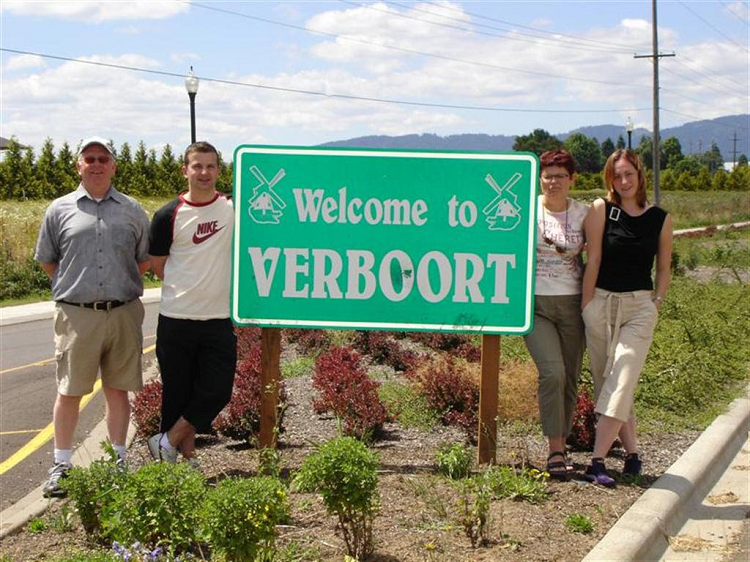PORTLAND, Oregon is a large city with a population of 2.5 million, including suburbia. You will find a Rembrandt Drive there, a Vermeer Drive, and the city was recently under the spell of one of those immersive Van Gogh exhibitions that are touring the US. A while back, locals flocked to see six Rembrandt paintings on display, all in a community that has a Rotterdam Street, Amsterdam Lane, Klompen Street, Haven Lane and Randstad Street, each lined with new homes that sell for roughly half a million dollars.
Flip van der Weele is a lawyer there, Jesse Vander Heide is a doctor, and for your Botox needs you go to Els VanderVeer’s clinic. VanderLey, Vander Heyde, VanderHouwen, Vander Velde, all well-known names here on America’s far west side. And if you are looking for a home on miles-long Dutch Canyon Road, then you stop at Marjie Van der Laan’s office, because she is a real estate agent.
SURPRISING, so much Holland in Oregon? The answer is located half an hour outside the city, in the small town of Verboort. A century and a half ago, 27 Roman Catholic people from Brabant arrived there with names such as Jansen, Hermans and Van der Velden – and Willem Verboort himself. He was a priest, and he wasn’t satisfied with what he’d found in Wisconsin. Three shiploads with a total of almost a thousand Dutch folks from the Uden, Brabant area had traveled there. The Father expected the grass to be greener the closer you got to the Pacific coast, and he took the two dozen-plus others along, by train to San Francisco, by boat north, and finally one more train ride to Portland, back then not much of a place yet.
Half a day’s ride on horseback west stood an empty house with ten rooms. They all moved in there together. Father Willem went in search of wood and set about building a church. Jan van der Zanden planted strawberries and became the instigator of the giant strawberry fields in what today is Washington County, and the community, pleased with what they now had, called itself The Catholic Colony of Forest Grove. But the priest got a splinter in his leg, contracted an infection, caught pneumonia, and died. In his honor, the town was renamed Verboort.
IT IS OFTEN coincidences that make the difference. The news of young Father Willem’s death, at barely 41, spread like wildfire, and more and more Dutchmen came, curious, to Portland and the surrounding area. Large families, with many children who all got married and had themselves many children, with names that you now recognize in the cemetery so many years later: Bernards, Heesacker, Boogaard, DeGroat and DeGrout, Duyck, Evers, Jansen, Hendricks, and in Verboort’s church yard alone: 350 deceased whose names started with Vander-.
Every November, people from far and wide flock to the little town outside Portland, often ten thousand strong. It’s sausage-and-kraut day. Because the English word for the cabbage dish is sauerkraut, some think it’s something German, but nothing could be further from the truth. It is a Dutch tradition, brought from Brabant, sausage with sauerkraut stew, stamppot. In Oregon they love it.




